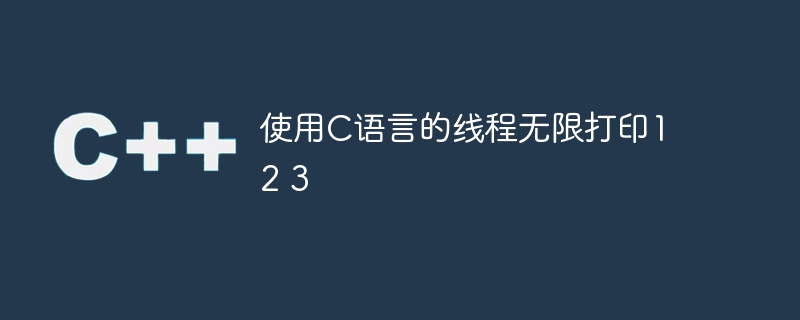
在这里,我们需要使用C编程语言中的线程无限次地重复打印1 2 3序列。
让我们来看看我们代码的样本输出:
1 2 3 1 2 3 1 2 3 1 2 3
为此,我们将需要使用三个在C编程语言中并行运行的线程。还需要一个变量,在第一个线程中初始化为1,并根据其上一个值更新其值。然后在函数中运行一个无限循环。
让我们看看实现我们解决方案的程序:
#include#include pthread_cond_t cond1 = PTHREAD_COND_INITIALIZER; pthread_cond_t cond2 = PTHREAD_COND_INITIALIZER; pthread_cond_t cond3 = PTHREAD_COND_INITIALIZER; pthread_mutex_t lock = PTHREAD_MUTEX_INITIALIZER; int value = 1; void *foo(void *n){ while(1) { pthread_mutex_lock(&lock); if (value != (int)*(int*)n) { if ((int)*(int*)n == 1) { pthread_cond_wait(&cond1, &lock); } else if ((int)*(int*)n == 2) { pthread_cond_wait(&cond2, &lock); } else { pthread_cond_wait(&cond3, &lock); } } printf("%d ", *(int*)n); if (value == 3) { value = 1; pthread_cond_signal(&cond1); } else if(value == 1) { value = 2; pthread_cond_signal(&cond2); } else if (value == 2) { value = 3; pthread_cond_signal(&cond3); } pthread_mutex_unlock(&lock); } return NULL; } int main(){ pthread_t tid1, tid2, tid3; int n1 = 1, n2 = 2, n3 = 3; pthread_create(&tid1, NULL, foo, (void *)&n1); pthread_create(&tid2, NULL, foo, (void *)&n2); pthread_create(&tid3, NULL, foo, (void *)&n3); while(1); return 0; }
1 2 3 1 2 3 1 2 3 1 2 3 1 2 3….
以上是使用C语言的线程无限打印1 2 3的详细内容。更多信息请关注PHP中文网其他相关文章!




